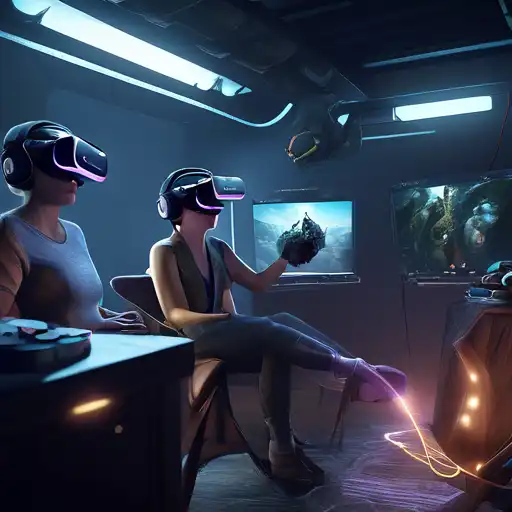Introduction to Virtual Reality Creation
Virtual Reality (VR) has transformed the way we interact with digital content, offering immersive experiences that were once the stuff of science fiction. Whether for gaming, education, or virtual tours, creating engaging VR content requires a blend of creativity, technical skill, and understanding of user experience. This guide will walk you through the essential steps to craft VR experiences that captivate and engage.
Understanding the Basics of VR
Before diving into creation, it's crucial to grasp what makes VR unique. Unlike traditional media, VR places the user inside the experience, offering a 360-degree view of a digitally constructed world. This immersion is what sets VR apart, making the design and development process distinct from other digital projects.
Key Components of VR Experiences
Creating a VR experience involves several key components:
- Hardware: The choice of VR headset (like Oculus Rift, HTC Vive, or PlayStation VR) can influence the design and functionality of your experience.
- Software: Tools like Unity or Unreal Engine are popular for VR development, offering robust platforms to build and test your projects.
- User Interface (UI) and User Experience (UX): Designing for VR requires rethinking traditional UI/UX principles to accommodate the immersive nature of the medium.
- Content: The narrative or purpose of your VR experience is what will engage users. Whether it's a game, educational tool, or virtual tour, the content must be compelling.
Designing for Immersion
Immersion is the hallmark of a great VR experience. To achieve this, consider the following:
- Environment Design: Create detailed, interactive environments that respond to user actions.
- Sound Design: Spatial audio can significantly enhance immersion, making users feel like they're truly inside the virtual world.
- Interactivity: Allow users to interact with the environment in meaningful ways, increasing engagement and presence.
Testing and Optimization
Before launching your VR experience, thorough testing is essential. Pay attention to:
- Performance: Ensure your experience runs smoothly across different devices to prevent motion sickness and maintain immersion.
- User Feedback: Gather feedback from testers to identify areas for improvement in design, interactivity, and overall experience.
Conclusion
Creating immersive VR experiences is a challenging yet rewarding endeavor. By understanding the unique aspects of VR, focusing on immersion, and rigorously testing your projects, you can craft experiences that stand out in the growing VR landscape. For more insights into digital experiences, explore our latest articles on digital trends.
